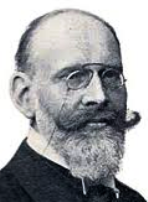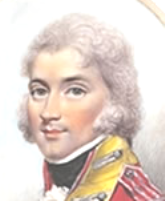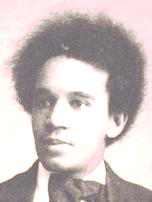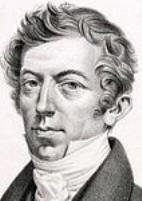UNTIL JULY 15, TO PLACE AN ORDER ONLINE FIRST EMAIL US AT editionsilvertrust@gmail.com
What's New for Summer 2025
Automatic 25% Discount on All Orders > $200
Click on the links in all caps and boldface for more details and soundbites
|
|
|
 Diplomat,
composer, festival founder, and artistic director or music venues,
BOLKO VON HOCHBERG
(1843-1926) was all of these things and this in part, along with the
fact that he was a member of an old German noble family, led to his
works not being taken as seriously as they should have been. However,
professional musicians like Richard Strauss thought highly of his
them. His PIANO
QUARTET IN B FLAT MINOR like so many other fine piano
quartets, has been ignored as nowadays only the works by the very
famous get programed due to the concerns box office managers. Audiences will
appreciate a fresh sounding work like this which can also be
recommended to amateurs. Diplomat,
composer, festival founder, and artistic director or music venues,
BOLKO VON HOCHBERG
(1843-1926) was all of these things and this in part, along with the
fact that he was a member of an old German noble family, led to his
works not being taken as seriously as they should have been. However,
professional musicians like Richard Strauss thought highly of his
them. His PIANO
QUARTET IN B FLAT MINOR like so many other fine piano
quartets, has been ignored as nowadays only the works by the very
famous get programed due to the concerns box office managers. Audiences will
appreciate a fresh sounding work like this which can also be
recommended to amateurs. |
 WOLDEMAR
BARGIEL (1828-1897) was the half brother to Clara Schumann and the brother in
law of Robert Schumann, both of whom encouraged him to study at the
Leipzig Conservatory which had just been founded by Mendelssohn. His
teachers there were all Mendelssohn and Schumann acolytes and it is
hardly a surprise that his music shows the influence of those famous
composers. His
STRING QUARTET NO.2 IN D MINOR, is an early work
completed shortly after he graduated from the Conservatory. It is an
appealing work which is fun to play and which Presents WOLDEMAR
BARGIEL (1828-1897) was the half brother to Clara Schumann and the brother in
law of Robert Schumann, both of whom encouraged him to study at the
Leipzig Conservatory which had just been founded by Mendelssohn. His
teachers there were all Mendelssohn and Schumann acolytes and it is
hardly a surprise that his music shows the influence of those famous
composers. His
STRING QUARTET NO.2 IN D MINOR, is an early work
completed shortly after he graduated from the Conservatory. It is an
appealing work which is fun to play and which Presentsno technical difficulties. This is no mere imitation of Schumann or Mendelssohn |
|
|
 AUGUSTE
DE SAYVE
(1790-1854) was a true "Renaissance Man".A member of the French
nobility, he was not only a composer and excellent pianist, he was a
famous author of travel books, an important painter whose works are
in museums and lastly an officer in the Napoleonic Army who served
in several campaigns, including the 1812 Battle of Borodino in
Russia. His
QUINTET IN E FLAT MAJOR FOR PIANO AND WINDS was
dedicated to his teacher, the famous pianist and composer. Johann
Nepomuk Hummel. A worthy piece for the concert which can be recommended
to amateurs if they have a technically assured pianist. AUGUSTE
DE SAYVE
(1790-1854) was a true "Renaissance Man".A member of the French
nobility, he was not only a composer and excellent pianist, he was a
famous author of travel books, an important painter whose works are
in museums and lastly an officer in the Napoleonic Army who served
in several campaigns, including the 1812 Battle of Borodino in
Russia. His
QUINTET IN E FLAT MAJOR FOR PIANO AND WINDS was
dedicated to his teacher, the famous pianist and composer. Johann
Nepomuk Hummel. A worthy piece for the concert which can be recommended
to amateurs if they have a technically assured pianist. |
 It is hard to believe when you hear the
NONET IN
F MINOR FOR WINDS, STRINGS AND PIANO that was
composed by an 18 year old boy who was a student at the
Royal College of Music in London. But, in
fact, that was the case when SAMUEL COLERAGE-TAYLOR
(1875-1912) finished putting pen to paper
in 1894. The manuscript to this fine work lay moldering in the
library of the RCM until it was finally discovered more than 100
years after it was composed. We are pleased to present an
affordable edition of this outstanding work which shows the
influence of Dvorak and Brahms. Virtually one of a kind, it is sure
to be a success in concert and can also be recommended to amateurs.
It is hard to believe when you hear the
NONET IN
F MINOR FOR WINDS, STRINGS AND PIANO that was
composed by an 18 year old boy who was a student at the
Royal College of Music in London. But, in
fact, that was the case when SAMUEL COLERAGE-TAYLOR
(1875-1912) finished putting pen to paper
in 1894. The manuscript to this fine work lay moldering in the
library of the RCM until it was finally discovered more than 100
years after it was composed. We are pleased to present an
affordable edition of this outstanding work which shows the
influence of Dvorak and Brahms. Virtually one of a kind, it is sure
to be a success in concert and can also be recommended to amateurs. |
 Virtually
all of the chamber music that
RICHARD STRAUSS (1864-1949) composed was written before 1900 with
the exception of his
STRING SEXTET FROM THE OPERA CAPRICCIO which
initially was not intended to be a stand alone piece of chamber music
but only as an introduction to the first scene of his opera Capriccio. However,
soon after finishing the opera in 1942, Strauss changed his mind and
permitted the work to published as a stand alone piece of chamber music.
It is a work full of charm and elegance and one which can certainly
serve for a shorter entee in a sextet concert. It is also well within
the range of experienced chamber music amateurs. Virtually
all of the chamber music that
RICHARD STRAUSS (1864-1949) composed was written before 1900 with
the exception of his
STRING SEXTET FROM THE OPERA CAPRICCIO which
initially was not intended to be a stand alone piece of chamber music
but only as an introduction to the first scene of his opera Capriccio. However,
soon after finishing the opera in 1942, Strauss changed his mind and
permitted the work to published as a stand alone piece of chamber music.
It is a work full of charm and elegance and one which can certainly
serve for a shorter entee in a sextet concert. It is also well within
the range of experienced chamber music amateurs. |
 To
say that JOHANN BAPTIST VANHAL (1739-1813)
was on friendly terms with most of the prominent composers then
active in Vienna during the classical era would be no exaggeration.
Reports survive of him playing the cello in a quartet with
Dittersdorf on first violin, Haydn on second violin and Mozart on
Viola. Mozart was impressed enough by Vanhal's music to perform several
of his violin concertos and conduct his symphones. For the last half
of his life, Vanhal had no patron or steady salary and made his
living writing for the emerging home music making market. His
TRIO FOR CLARINET, VIOLIN AND CELLO IN B FLAT MAJOR
is an excellent example of the type of work he produced for this
market. Well-crafted and fun to play, it enjoyed considerable
popularity and as such received several reprint editions.
This is a fine choice for amateur ensembles or student groups
looking to present a professional sounding work for recital. To
say that JOHANN BAPTIST VANHAL (1739-1813)
was on friendly terms with most of the prominent composers then
active in Vienna during the classical era would be no exaggeration.
Reports survive of him playing the cello in a quartet with
Dittersdorf on first violin, Haydn on second violin and Mozart on
Viola. Mozart was impressed enough by Vanhal's music to perform several
of his violin concertos and conduct his symphones. For the last half
of his life, Vanhal had no patron or steady salary and made his
living writing for the emerging home music making market. His
TRIO FOR CLARINET, VIOLIN AND CELLO IN B FLAT MAJOR
is an excellent example of the type of work he produced for this
market. Well-crafted and fun to play, it enjoyed considerable
popularity and as such received several reprint editions.
This is a fine choice for amateur ensembles or student groups
looking to present a professional sounding work for recital. |
 It is fair to say that JOHANN PIXIS
(1788-1874) was a complete musician. He was a virtuoso pianist whom
Parisian critics considered the equal of Liszt and Chopin. He was a
touring soloist and he often toured as a member of various piano
trios, first with his father and brother and then later with the
Bohrer Brothers Anton and Max, Anton a virtuoso violinist and Max a
virtuoso cellist. Pixis was also an important composer whose works
were not only praised by critics but also were favorites with
audiences. In Paris, when Lizst gave piano trio concerts with a
trios by Beethoven and Pixis, the critics as well as the audience
preferred the trios of Pixis. He wrote a great deal of chamber music
and the
Trio Concertant No.1 was a work
he often took on tour with the Bohrer brothers.
It is fair to say that JOHANN PIXIS
(1788-1874) was a complete musician. He was a virtuoso pianist whom
Parisian critics considered the equal of Liszt and Chopin. He was a
touring soloist and he often toured as a member of various piano
trios, first with his father and brother and then later with the
Bohrer Brothers Anton and Max, Anton a virtuoso violinist and Max a
virtuoso cellist. Pixis was also an important composer whose works
were not only praised by critics but also were favorites with
audiences. In Paris, when Lizst gave piano trio concerts with a
trios by Beethoven and Pixis, the critics as well as the audience
preferred the trios of Pixis. He wrote a great deal of chamber music
and the
Trio Concertant No.1 was a work
he often took on tour with the Bohrer brothers. |